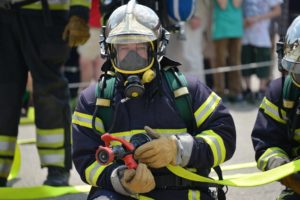Protect Your Eyes and Face

What’s at Stake?
Safety eyewear and face shields can save you from injuries which can lead to blindness and facial disfigurement. Prompt treatment of eye and facial injuries reduces the risk of permanent damage.
What’s the Danger?
Your face is at risk from many potential hazards at work. Flying and falling objects, materials, and dust can irritate your eyes and injure your face and eyes. Burns and toxic effects from chemicals are also serious eye and face hazards. So are solvents and corrosive substances. These hazards can cause painful, long-term injuries.
How to Protect Yourself
Wear eye and face protection on the job. Your supervisor will help you choose the right protection for the danger and tell you when to wear it.
- Safety glasses
These look like ordinary glasses, but they are made of impact-resistant material that protects you from flying objects. In many instances, you will need to wear your safety glasses with side shields. - Goggles
These are made to protect you from chemical splashes or impact from flying objects which could damage your eyes. Make sure you have the right ones for the job. For example, don’t use vented googles when working with hazardous chemicals. - Shaded eyewear
These protect you from radiation burns to the eyes. Safety glasses with ultraviolet protection may be required for outdoor work. Special eye protection might be required for work with lasers. Welding helmets have special shaded eye pieces and must always be worn when welding. Anyone working near a welding operation must wear the right safety glasses to protect against radiation burns to the eye. - Face shields and head coverings
In addition to safety glasses or goggles, use face shields and head coverings while doing overhead work and to provide more protection against splashing, flying and falling objects. - Avoid hazards
Proper arrangement of work equipment and materials helps you stay away from hazards. Machine guards shield you from wood or metal chips. Exhaust systems remove particles from the air. Splash guards help protect you from harmful liquids. Screens keep you away from hazards such as light radiation. - Eye those chemicals
Read the label and safety data sheet before using any chemical substance. Use safety eyewear as instructed. - Prompt treatment
Learn where the eyewash station is and find out how to operate it. You might need to use it while temporarily blinded by a chemical splash. Always get prompt first aid treatment for any eye injury.
Final Word
Protect your face and your eyes. Wear your eye and face protection